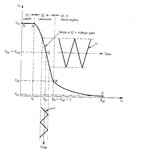liudehua
Newbie level 6

- Joined
- Jul 25, 2013
- Messages
- 12
- Helped
- 2
- Reputation
- 4
- Reaction score
- 2
- Trophy points
- 3
- Activity points
- 68
Why MOSFET must be biased in saturation region for amplification instead of triode region?
i have realised that hand analysis is much easier by biasing the mosfet in the saturation, but now equipped with simulation tools, triode region might give us some improvements on the functions of amplifiers while not imposing much challenge in the process of analysis.
P.S. i know that biasing in the saturation region gives higher voltage gain Av for a common source amplifier, but i doubt it's the same for other amplifier applications.
please give me your opinion on why we use saturation region?:smile:
i have realised that hand analysis is much easier by biasing the mosfet in the saturation, but now equipped with simulation tools, triode region might give us some improvements on the functions of amplifiers while not imposing much challenge in the process of analysis.
P.S. i know that biasing in the saturation region gives higher voltage gain Av for a common source amplifier, but i doubt it's the same for other amplifier applications.
please give me your opinion on why we use saturation region?:smile:





